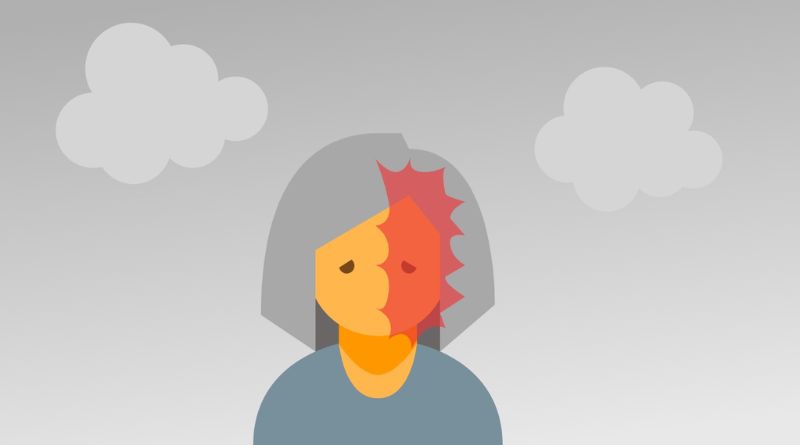The Migraine Puzzle: Unraveling Causes, Symptoms, and Treatment Strategies
Migraines are more than just intense headaches—they are complex neurological events that can significantly impact a person’s quality of life. If you’ve ever experienced a migraine or know someone who has, you’re aware of the excruciating pain, visual disturbances, and other debilitating symptoms that often accompany it. Migraines negatively impact quality of life and can impede efforts to earn a living or carry out daily routines. In this blog post, we’ll delve into the world of migraines, exploring their causes, symptoms, and various strategies for managing and treating them. If you suffer from severe migraines it’s important to see a neurologist about pain management.
Table of Contents
Understanding Migraines: The Basics

Migraines are a type of headache characterized by recurrent, severe throbbing pain, usually on one side of the head. While the exact cause of migraines isn’t fully understood, they are thought to involve a combination of genetic, environmental, and neurological factors. Researchers believe that changes in brain activity, blood flow, and the release of certain chemicals in the brain contribute to the onset of a migraine attack.
How Common Are Migraines and Severe Headaches?
According to a 2021 U.S. CDC survey, 4.3% of adults who were 18 years or older were “bothered a lot by headache or migraine” within the last three months. Women, with a rate of 6.2%, were more affected by this than men, who had a rate of 2.2%. Women suffered more from headaches than men across all age groups: among those aged 18-44, women reported 7.4% compared to men’s 2.5%; for those aged 45-64, women reported 6.7% while men reported 2.4%; and for those aged 65 or older, women reported 3.1% and men reported 1.5%. Notably, the age group of 65 and above had the lowest percentages for both men and women when it came to experiencing significant discomfort from headaches or migraines over the past three months.
Recognizing the Symptoms
Migraines often come with a range of symptoms beyond just head pain. These can include:
- Aura: Some individuals experience visual disturbances, such as flashing lights, blind spots, or zigzag lines, shortly before the onset of the headache. This is known as an aura and can be a warning sign of an impending migraine.
- Sensitivity to Light and Sound: During a migraine, sensitivity to light (photophobia) and sound (phonophobia) can be severe, making it difficult to tolerate normal environmental stimuli.
- Nausea and Vomiting: Many migraine sufferers experience nausea and may even vomit during an attack.
- Pain Worsened by Movement: Physical activity or even simple movements can intensify the pain of a migraine.
Treatment Strategies
Managing migraines often involves a combination of lifestyle changes, medication, and alternative therapies. Here are some strategies that individuals who experience migraines may consider:
- Identifying Triggers: Keeping a migraine diary can help pinpoint triggers such as specific foods, hormonal changes, stress, or lack of sleep. Avoiding these triggers can reduce the frequency of attacks.
- Medications: Over-the-counter pain relievers may help manage mild migraines. For more severe cases, prescription medications such as triptans or preventive medications may be recommended by a healthcare professional.
- Botox injections: Botox injections have emerged as an innovative and effective treatment option for chronic migraine headaches. By strategically injecting small amounts of botulinum toxin (Botox) into specific muscle areas of the head and neck, this therapy aims to prevent the onset of migraines. Botox works by blocking nerve signals that contribute to muscle tension and pain, thereby reducing the frequency and severity of migraine episodes in individuals who experience these debilitating headaches regularly. Dr. Andrea H. An, a neurologist in Arizona, calls botox injections the “gold standard” for treating migraines.
- Lifestyle Modifications: Practicing stress management techniques, getting regular exercise, maintaining a consistent sleep schedule, and staying hydrated can all contribute to migraine prevention.
- Nutrition and Hydration: Paying attention to diet and staying adequately hydrated can have a positive impact on migraine frequency and severity.
Seeking Professional Help
If you experience frequent or severe migraines, it’s crucial to consult your primary care provider for proper diagnosis and treatment. If the problem persists or is severe, it is very likely you will be referred to a neurologist. Your doctor can help develop a personalized plan to manage your migraines based on your specific triggers, symptoms, and medical history.
Conclusion
In conclusion, while migraines present a challenging puzzle, understanding their causes, recognizing their symptoms, and adopting appropriate treatment strategies can significantly improve your quality of life. By working with your primary care provider and, if necessary, a neurologist, and making appropriate lifestyle changes as needed, you can take steps towards managing and alleviating the impact of migraines on your well-being.
Author Bio

Aaron Charlton, PhD writes about health, science and travel topics. He did his PhD work in Consumer Behavior at University of Oregon (’19). Aaron also writes on topics of scientific integrity and is sometimes quoted in the media on such topics.
Recommended Articles:





